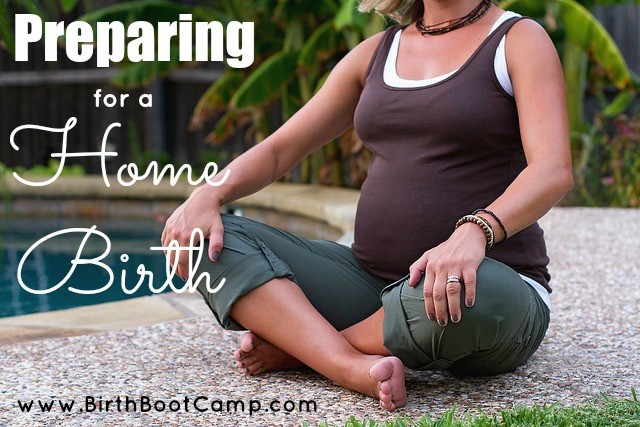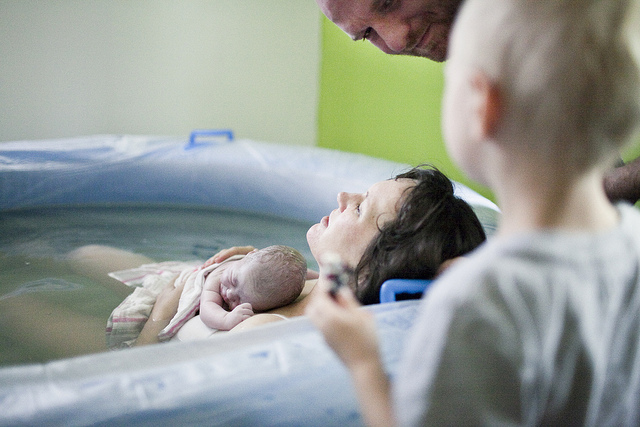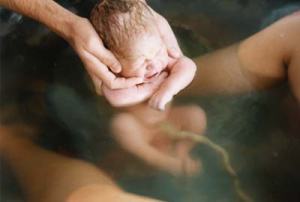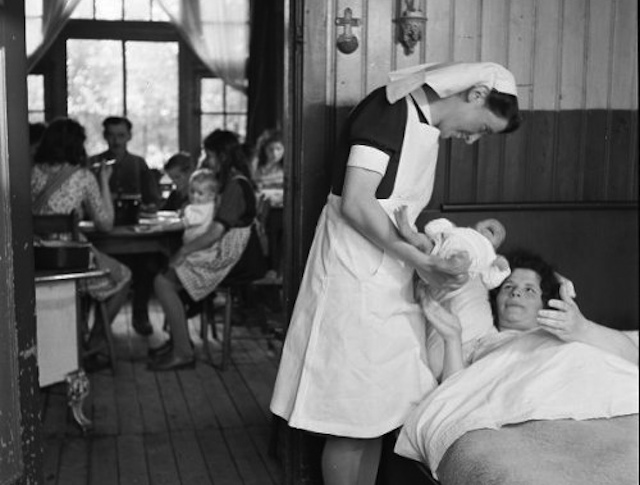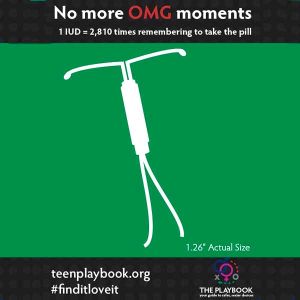“Μια φορά καισαρική, για πάντα καισαρική”… υπήρξε σαν αξίωμα για πολλά χρόνια, εδώ στην Ελλάδα και σε πολλές άλλες χώρες. Όμως, τα συνεχώς αυξανόμενα ποσοστά καισαρικής τομής παγκοσμίως έχουν οδηγήσει στην επανεξέταση των κινδύνων της καισαρικής τομής σε σχέση με την κολπικό τοκετό μετά από προηγηθείσα καισαρική. Έντονη συζήτηση γίνεται γύρω από αυτό το θέμα, με τις απόψεις να είναι διχασμένες. Συνεπώς, όταν έρχεται η ώρα να αποφασίσουν πολλές γυναίκες αναρωτιούνται: εγώ τελικά τι πρέπει να κάνω, ξανά καισαρική ή να επιχειρήσω μια φυσιολογική γέννα;
Η αλήθεια είναι πως η απάντηση δεν είναι τόσο εύκολη. Και οι δύο επιλογές έχουν πιθανούς κινδύνους, ο οποίοι διαφέρουν σε κάθε γυναίκα και σε κάθε εγκυμοσύνη ξεχωριστά.
Σε αυτό το άρθρο θα βρείτε όλες τις απαραίτητες πληροφορίες σχετικά με τον φυσιολογικό τοκετό μετά από καισαρική τομή, ώστε να μπορείτε να το συζητήσετε με το γιατρό ή τη μαία σας, και να πάρετε μια συνειδητοποιημένη και υπεύθυνη απόφαση.
 1) Τι είναι ο κολπικός τοκετός μετά από καισαρική τομή (VBAC);
1) Τι είναι ο κολπικός τοκετός μετά από καισαρική τομή (VBAC);
Αν είστε έγκυος και γεννήσατε το προηγούμενό σας μωρό με καισαρική τομή, αυτή τη φορά έχετε δύο επιλογές για το πώς θα γεννήσετε:
- μια εκλεκτική επαναλαμβανόμενη καισαρική τομή (ERCS: elective repeat caesarean section), ή
- ένας φυσιολογικός τοκετός μετά από καισαρική τομή (VBAC: vaginal birth after cesarean section). Το VBAC αναφέρεται στη γέννηση μέσω του κόλπου σε μια γυναίκα που είχε ήδη κάνει μια καισαρική τομή σε προηγούμενη κύηση. Ο κολπικός τοκετός περιλαμβάνει και τις περιπτώσεις στις οποίες ο τοκετός υποστηρίζεται με εμβρυουλκία (“κουτάλες”) ή ανναρώφηση (βεντούζα).
Τόσο ο κολπικός τοκετός, όσο και η επαναλαμβανόμενη καισαρική έχουν οφέλη και κινδύνους (βλ. παρακάτω).
Η δοκιμασία τοκετού μετά από καισαρική τομή (αγγλικά TOLAC: trial of labor after cesarean delivery) είναι η προσπάθεια να διεξάγεται ένα VBAC. Εάν είναι επιτυχής, θα έχει ως αποτέλεσμα τη φυσιολογική γέννηση. Αν δεν είναι επιτυχής, θα χρειαστείτε ξανά καισαρική τομή.
2) Πόσες πιθανότητες έχω να γεννήσω κολπικά μετά από μια καισαρική;
Εφόσον έχετε τις κατάλληλες προυποθέσεις για VBAC, υπάρχουν πολλές πιθανότητες να το πετύχετε: περίπου το 60 έως 80% των γυναικών που επιχειρούν ένα VBAC θα γεννήσουν κολπικά.
Υπάρχουν ορισμένοι παράγοντες που επηρεάζουν τις πιθανότητες επιτυχίας, τόσο από την μητέρα όσο και από το μωρό (βλ. παρακάτω). Παρόλα αυτά, είναι αδύνατο να προβλέψουμε με βεβαιότητα ποια γυναίκα θα καταφέρει να γεννήσει φυσιολογικά και ποια θα καταλήξει σε μια επαναλαμβανόμενη καισαρική.
Ένας προηγούμενος φυσιολογικός τοκετός, ιδιαίτερα ένα προηγούμενο VBAC, είναι ο καλύτερος προγνωστικός δείκτης επιτυχούς VBAC, και συνδέεται με ποσοστό επιτυχίας 85-90%.
 3) Είμαι καλή υποψήφια για VBAC;
3) Είμαι καλή υποψήφια για VBAC;
Το VBAC είναι κατάλληλο για την πλειοψηφία των γυναικών που:
- είναι έγκυος με ένα έμβρυο (και όχι με δίδυμα ή παραπάνω),
- το μωρό είναι τοποθετημένο με το κεφάλι κάτω (κεφαλική προβολή),
- έχουν μια τελειόμηνη κύηση (37 εβδομάδες ή παραπάνω),
- έχουν μία προηγηθείσα εγκάρσια καισαρική τομή.
4) Πότε αντενδείκνυται το VBAC;
Το VBAC δεν συνιστάται στις ακόλουθες περιπτώσεις:
- Τρεις ή περισσότερες προηγούμενες καισαρικές τομές. Δείτε παρακάτω σχετικά με δύο προηγηθείσες καισαρικές.
- Έχει γίνει ρήξη μήτρας κατά τη διάρκεια προηγούμενης προσπάθειας τοκετού, καθώς αυξάνεται σημαντικά ο κίνδυνος (7 φορές υψηλότερος) μιας υποτροπιάζουσας ρήξης της μήτρας στην επόμενη εγκυμοσύνη.
- Η προηγούμενη καισαρική τομή ήταν “κλασική”. Στη συντριπτική πλειοψηφία των γυναικών, κατά την διάρκεια της καισαρικής η μήτρα κόβεται οριζόντια, στο χαμηλότερο τμήμα της. Αυτό ονομάζεται κατώτερη εγκάρσια καισαρική τομή. Σπάνια απαιτείται μια κάθετη τομή της μήτρας, η οποία είναι γνωστή ως κλασική καισαρική τομή. Περιστασιακά, πραγματοποιείται τομή σε σχήμα J ή T. Και στις δύο περιπτώσεις της κάθετης και της J / T-τομής υπάρχει υψηλότερος κίνδυνος ρήξης της μήτρας. Επομένως, είναι πολύ σημαντικό να γνωρίζετε ποια τομή πραγματοποιήθηκε στην προηγούμενή σας καισαρική. Να έχετε υπόψη σας πως ο τύπος της ουλής στο δέρμα δεν αντιστοιχεί κατ ‘ανάγκη εκείνο της μήτρας.
- Μια προηγούμενη χειρουργική επέμβαση της μήτρας, όπως η αφαίρεση ινομυωμάτων (ινομυωματεκτομή), καθώς αυξάνει τον κίνδυνο ρήξης της μήτρας.
- Υπάρχουν και άλλες επιπλοκές της εγκυμοσύνης που αποτελούν απόλυτη αντένδειξη για φυσιολογικό τοκετό, ανεξάρτητα από την παρουσία ή όχι προηγηθείσας καισαρικής (π.χ. προδρομικός πλακούντας)
- Ισχιακή προβολή του εμβρύου (το μωρό έρχεται πρώτα με τους γλουτούς ή τα πόδια) ή άλλες μη φυσιολογικές θέσεις.
- Πολύδυμη κύηση (με δίδυμα ή περισσότερα έμβρυα).
5) Ποιοι παράγοντες μειώνουν τις πιθανότητες επιτυχίας ενός VBAC;
Γενικά, οι πιθανότητες επιτυχίας είναι χαμηλότερες όταν:
- Ο λόγος για την προηγούμενη καισαρική είναι πιθανό να είναι πρόβλημα και αυτή τη φορά. Ας πούμε ότι μια γυναίκα που είχε ήδη μια κολπική γέννα και στη συνέχεια έκανε μια καισαρική επειδή το μωρό της ήταν σε ισχιακή προβολή (γλουτοί ή πόδια πρώτα) είναι πολύ πιο πιθανό να καταφέρει να γεννήσει με VBAC από κάποια άλλη που είχε κάνει καισαρική μετά την επίτευξη πλήρους διαστολή και εξώθηση για τρεις ώρες, το ότι μπορεί να υποδηλώνει πως αυτή η γυναίκα έχει στενή λεκάνη (η λεγόμενη κεφαλο-πυελική δυσαναλογία).
- Γίνεται πρόκληση τοκετού (ο τοκετός δεν ξεκίνησε αυτόματα).
- Είστε ηλικίας άνω των 40 ετών.
- Είστε υπέρβαρη.
- Το μωρό είναι μεγάλο (πάνω από 4 κιλά εκτιμώμενο βάρος).
- Η κύηση είναι παρατεταμένη (περισσότερο από 40 εβδομάδες).
- Υπάρχει μικρό χρονικό διάστημα ανάμεσα στις κυήσεις (λιγότερο από 19 μήνες).
- Έχετε προεκλαμψία (υψηλή αρτηριακή πίεση) τη στιγμή του τοκετού.
Θα πρέπει να συζητήσετε με τον γιατρό σας σχετικά με τις πιθανότητες επιτυχίας συγκεκριμένα για την δικιά σας περίπτωση και να σταθμίσετε προσεκτικά τα οφέλη και τους κινδύνους.
 6) Ποια είναι τα πλεονεκτήματα ενός VBAC;
6) Ποια είναι τα πλεονεκτήματα ενός VBAC;
Η καισαρική τομή είναι μια χειρουργική επέμβαση, και ως εκ τούτου συνδέεται με ορισμένους αυξημένους κινδύνους σε σχέση με την φυσιολοκιγή γέννα. Επομένως, ένα επιτυχημένο VBAC συνεπάγεται:
- Βραχύτερη περίοδος ανάρρωσης.
- Λιγότερος πόνος μετά τον τοκετό.
- Χαμηλότερος κίνδυνος μόλυνσης.
- Μειωμένη απώλεια αίματος, μειωμένη ανάγκη μετάγγισης αίματος.
- Λιγότερες πιθανότητες να χρειαστεί μια επείγουσα υστερεκτομή (αφαίρεση μήτρας).
- Χαμηλότερη πιθανότητα βλάβης άλλων οργάνων (ουροδόχου κύστης και εντέρου).
- Χαμηλότερος κίνδυνος εμφάνισης θρόμβου αίματος (θρόμβωση) στα πόδια (εν τω βάθη φλεβική θρόμβωση) ή πνεύμονες (πνευμονική εμβολή).
- Μειωμένος κίνδυνος πυελικών συμφήσεων (ουλώδης ιστός που σχηματίζεται μεταξύ των οργάνων, ο οποίος μπορεί να είναι υπεύθυνος για χρόνιο πόνο, υπογονιμότητα ή εντερική απόφραξη).
- Μειωμένες πιθανότητες αναπνευστικά προβλήματα στο μωρό. Περίπου το 4-5% των νεογνών που γεννιούνται με προγραμματισμένη καισαρική έχουν αναπνευστικά προβλήματα, σε σύγκριση με 2-3% μετά το VBAC. Ο κίνδυνος είναι ελαφρώς υψηλότερος αν η καισαρική τομή έγινε πριν τις 39 εβδομάδες. Είναι γεγονός πως τα προβλήματα αναπνοής είναι αρκετά συνηθισμένα μετά από καισαρική τομή, αλλά συνήθως δεν διαρκούν πολύ.
- Πολλές γυναίκες θέλουν να βιώσουν την εμπειρία μιας φυσιολογικής γέννας, και όταν το VBAC είναι επιτυχές, τις προφέρει αυτή την δυνατότητα.
Αν σχεδιάζετε να έχετε περισσότερα παιδιά, το VBAC μπορεί να σας βοηθήσει να αποφύγετε ορισμένα προβλήματα υγείας που συνδέονται με πολλαπλές καισαρικές τομές. Μάλιστα, κάποιες επιπλοκές της καισαρικής, όπως η αιμορραγία, η επείγουσα υστερεκτομή, οι τραυματισμοί του εντέρου ή της ουροδόχου κύστης, οι σχηματισμοί συμφήσεων είναι όλες πιο συχνές όσο αυξάνεται ο αριθμός καισαρικών τομών. Επιπλέον, κάθε καισαρική αυξάνει τον κίνδυνο σε μελλοντικές εγκυμοσύνες επιπλοκών του πλακούντα, όπως ο επιπωματικός πλακούντας (ο πλακούντας είναι χαμηλά στη μήτρα και καλύπτει τον τράχηλο) και ο στιφρός πλακούντας (η πρόσφηση του πλακούντα είναι πολύ βαθιά στα τοιχώματα της μήτρας και δεν αποκολλάται σωστά κατά τον τοκετό). Και οι δύο καταστάσεις μπορούν να οδηγήσουν σε μαζική αιμορραγία (απειλητική για τη ζωή) και σε υστερεκτομή. Εάν γνωρίζετε ότι θέλετε περισσότερα παιδιά, πρέπει και αυτό να το λάβετε υπόψη στην απόφασή σας.
 7) Ποιοι είναι οι κίνδυνοι ενός VBAC;
7) Ποιοι είναι οι κίνδυνοι ενός VBAC;
- Μια από τις πιο επίφοβες επιπλοκές ενός VBAC είναι η ρήξης της μήτρας, δηλαδή όταν η ουλή της μήτρας σχίζεται ή διαχωρίζεται. Ακόμα κι αν έχετε τις καλύτερες προϋποθέσεις για ένα VBAC, υπάρχει ένας κίνδυνος 0,7% (δηλαδή 7 στις 1000 γυναίκες που υποβάλλονται σε VBAC) η μήτρα να σπάσει στο σημείο της προηγούμενης καισαρικής τομής. Εάν αυτό συμβεί, μπορεί να προκαλέσει μαζική, απειλητική για τη ζωή αιμορραγία στη μητέρα, και ενδεχομένως στέρηση οξυγόνου στο μωρό, με επακόλουθη εγκεφαλική βλάβη (σε 8 από τις 10.000 περιπτώσεις) ή ακόμη και θάνατος (2-3 στις 10.000 περιπτώσεις). Ενώ ο κίνδυνος αυτός είναι πολύ μικρός συνολικά, είναι υψηλότερος σε σύγκριση με μια προγραμματισμένη καισαρική τομή.
- Ανεξάρτητα από τη ρήξη της μήτρας, το VBAC φέρει αυξημένο κίνδυνο μακροπρόθεσμης νευρολογικής βλάβης ή ακόμη και θάνατο του εμβρύου. Και πάλι, ο κίνδυνος είναι πολύ μικρός, αλλά είναι υψηλότερος στις γυναίκες που η προσπάθεια για VBAC απέτυχε σε σχέση με εκείνες που κατάφεραν να γεννήσουν κολπικά ή που γέννησαν με προγραμματισμένη καισαρική τομή.
- Ενδέχεται να υποβάλλεστε σε πολλές ώρες προσπάθειας τοκετού και στο τέλος να κάνετε καισαρική. Η ανεπιτυχής δοκιμασία για VBAC συχνά προκαλεί μεγάλη απογοήτευση στις γυναίκες, καθώς οι προσδοκίες τους για φυσιολογικό τοκετό δεν πληρούνται.
- Σε περίπτωση VBAC ενδέχεται ο τοκετός να χρίζει υποβοήθηση με αναρρόφηση ή εμβρυουλκία, τα οποία αυξάνουν τον κίνδυνο κάκωσης των μυών που ελέγχουν τον πρωκτό ή το ορθό (ρήξη του περινέου τρίτου ή τέταρτου βαθμού).
- Μπορεί να χρειαστεί να γίνει μια έκτακτη καισαρική κατά τη διάρκεια της δοκιμασίας τοκετού. Αυτό συμβαίνει στο 25% των γυναικών. Μια επείγουσα καισαρική τομή φέρει περισσότερους κινδύνους από μια προγραμματισμένη καισαρική. Οι πιο συνηθισμένοι λόγοι για μια έκτακτη καισαρική είναι αν ο τοκετός επιβραδύνεται ή υπάρχει ανησυχία για την ευημερία του μωρού.
Πρέπει να επισημάνουμε πως ενώ ένα επιτυχημένο VBAC είναι λιγότερο επικίνδυνο από μια προγραμματισμένη καισαρική τομή, ένα ανεπιτυχές VBAC που απαιτεί καισαρική φέρει μεγαλύτερο κίνδυνο από μια προγραμματισμένη καισαρική. Και ο κίνδυνος επιπλοκών είναι ακόμη υψηλότερος αν χρίζει επείγουσα καισαρική τομή.
8) Μπορώ να προχωρήσω σε VBAC εάν έχω ήδη κάνει δύο καισαρικές;
Σύμφωνα με τις αμερικάνικες (ACOG) και της βρετανικές (RCOG) κατευθυντήριες οδηγίες, το VBAC μπορεί να προσφέρεται σε γυναίκες που έχουν δύο προηγηθείσες εγκάρσιες καισαρικές τομές, μετά από λεπτομερή συμβουλευτική. Παρόλα αυτά, πρέπει να γνωρίζουν ότι ο κίνδυνος ρήξης της μήτρας αυξάνεται έως και 5 φορές (0,9 έως 3,7%).
Το VBAC μετά από δύο προηγούμενες καισαρικές είναι εξαιρετικά αμφιλεγόμενο, και ενδέχεται να μην είναι αποδεκτό από ορισμένους γιατρούς ή ιδρύματα.
 9) Τι να περιμένω κατά τη διάρκεια ενός VBAC;
9) Τι να περιμένω κατά τη διάρκεια ενός VBAC;
- Το VBAC πρέπει να λαμβάνει χώρα σε νοσοκομείο ή μαειυτήριο που μπορεί να διαχειριστεί επείγουσες καταστάσεις που θα μπορούσαν να απειλούν τη ζωή της γυναίκας ή του εμβρύου, και ΔΕΝ πρέπει να επιχειρείται στο σπίτι.
- Θα πρέπει να πληρούνται όλα τα κριτήρια και να μην υπάρχει καμία από τις αντενδείξεις για VBAC που έχουν αναφερθεί προηγουμένως.
- Οι παράγοντες που μπορεί να μειώσουν ή να αυξήσουν την πιθανότητα επιτυχίας θα συζητηθούν διεξοδικά, επειδή είναι ξεχωριστοί για κάθε γυναίκα και για κάθε εγκυμοσύνη.
- Οι καλύτερες υποψήφιες για VBAC είναι οι γυναίκες στις οποίες ο τοκετός ξεκινά αυτόματα, καθώς η πρόκληση τοκετού (με φάρμακα ή άλλες μεθόδους) μειώνει τις πιθανότητες επιτυχούς κολπικού τοκετού και φέρει 3 φορές μεγαλύτερο κίνδυνο επιπλοκών.
- Γενικά συνιστάται να προσέρχεστε στο νοσοκομείο με τα πρώτα σημάδια τοκετού, για προσεκτική και έγκυρη αξιολόγηση.
- Ο καρδιακός παλμός του μωρού θα παρακολουθείται συνεχώς κατά τη διάρκεια του τοκετού για να εξασφαλίζεται η ευημερία του μωρού, αφού οι αλλαγές στην καρδιακή λειτουργία είναι ένα από τα πρώιμα σημάδια προβλημάτων με την προηγούμενη καισαρική τομή.
- Ένας ενδοφλέβιος καθετήρας είναι απαραίτητος για την άμεση αντιμετώπιση οποιασδήποτε ενδεχόμενης επιπλοκής.
- Να αποφεύγετε να τρώτε οτιδήποτε κατά τη διάρκεια του τοκετού, σε περίπτωση που χρειαστεί να γίνει μια έκτακτη καισαρική αργότερα.
- Επιτρέπονται τα φάρμακα για την ανακούφιση του πόνου, συμπεριλαμβανομένης και η επισκληρίδιος αναλγησίας.
- Τα ακόλουθα σημάδια μπορεί να είναι ένδειξη ρήξης της μήτρας και χρίζουν μια επείγουσα καισαρική:
- Συνεχιζόμενη βραδυκαρδία στο έμβρυο (η καρδιακή συχνότητα του μωρού πέφτει, είναι το συνηθέστερο σημάδι ρήξης της μήτρας).
- Κολπική αιμορραγία.
- Ευαισθησία στην ουλή της καισαρικής.
- Πόνος ανάμεσα στις συσπάσεις.
- Παύση συσπάσεων.
- Πόνος που επιμένει ακόμα και με την επισκληρίδιο αναλγησία, ή υπερβολικές ανάγκη για επισκληρίδια φάρμακα.
- Ψηλαφήση εμβρυϊκών μερών έξω από τη μήτρα.
- Αιματουρία (αίμα στα ούρα).
Είναι σημαντικό να καταλάβετε πως η ρήξη της μήτρας μπορεί να είναι σιωπηρή, και ότι ακόμα και μια επείγουσα καισαρική μπορεί να μην αποτρέψει σοβαρές επιπλοκές, τόσο για εσάς όσο και για το μωρό σας.
Εν κατακλείδι:
- Ένα επιτυχές VBAC έχει τις λιγότερες επιπλοκές.
- Ο μεγαλύτερος κίνδυνος ανεπιθύμητων αποτελεσμάτων που σχετίζονται με το VBAC συμβαίνει όταν το VBAC καταλήξει σε επείγουσα καισαρική τομή.
- Είναι συχνά αδύνατο να προβλέψουμε ποιες γυναίκες θα έχουν ένα επιτυχημένο VBAC και ποιες θα χρειαστούν μια επαναλαμβανόμενη καισαρική.
- Ένα VBAC που ξεκινάει αυτόματα (χωρίς πρόκληση) έχει κίνδυνο 1: 150 ρήξης της μήτρας.
- Η ρήξη της μήτρας είναι μια σπάνια, αλλά δυνητικά απειλητική για τη ζωή κατάσταση, τόσο για τη μητέρα όσο και για το μωρό της.
- Ακόμα και όταν η καισαρική γίνεται αμέσως, ενδέχεται να μην μπορέσει να αποτρέψει σοβαρές επιπλοκές, τόσο για τη μητέρα όσο και για το μωρό της.
- Ο απόλυτος κίνδυνος σοβαρών προβλημάτων και θανάτου του εμβρύου που σχετίζονται με το VBAC είναι πολύ χαμηλός, αλλά υψηλότερος από την προγραμματισμένη καισαρική.
- Τα νεογνά που γεννιούνται μέσω προγραμματισμένης καισαρικής τομής έχουν αυξημένο κίνδυνο αναπνευστικών προβλημάτων, τα οποία όμως είναι συνήθως βραχύβια.
- Η προγραμματισμένη καισαρική σχετίζεται με αυξημένο κίνδυνο επιπλοκών της πρόσφυσης του πλακούντα (επιπωματικός / στιφρός πλακούντας) σε μελλοντικές εγκυμοσύνες. Και άλλες επιπλοκές όπως οι πυελικές συμφύσεις είναι πιο συχνές όσο αυξάνεται ο αριθμός των καισαρικών.
Τα VBAC είναι πολύ αμφιλεγόμενο και μπορεί να είναι δύσκολο να αποφασίσετε αν είναι το καλύτερο για εσάς. Συζητήστε το διεξοδικά με τον/την γιατρό σας. Δώστε στον εαυτό σας αρκετό χρόνο για να ενημερωθείτε και να εξετάσετε προσεκτικά τα πλεονεκτήματα και τα μειονεκτήματα της κάθε επιλογής.
Βιβλιογραφία
- The American College of Obstetricians and Gynecologists (ACOG) – Vaginal Birth After Cesarean Delivery FAQ 070, December 2017 (For patients)
- ACOG Practice Bulletin Number 184 – Vaginal Birth After Cesarean Delivery, November 2017
- Royal College of Obstetricians & Gynaecologists (RCOG) – Birth options after previous caesarean section – July 2016 (For patients)
- Royal College of Obstetricians & Gynaecologists (RCOG) – Birth After Previous Caesarean Birth – Green-top Guideline No. 45, October 2015
- National Health System (NHS) UK – Clinical Guideline for: The Management of Vaginal Birth After Caesarean (VBAC). July 2016
Photo credits
1.Parents.com; 2.EvolutionaryParenting.com; 3.goldengateobgyn.org; 4.Healthymummy.com; 5.YouTube.com; 6.Scarymummy.com; 7.geoscripts.meredith.services


 Home birth is cheaper… provided that no transfer is needed and nothing goes wrong
Home birth is cheaper… provided that no transfer is needed and nothing goes wrong

